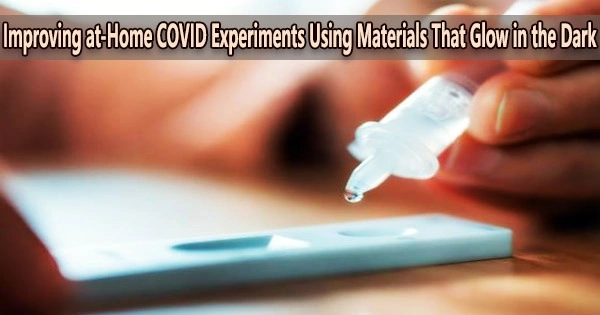University of Houston researchers to augment and improve quick COVID-19 home assessments are using glow-in-the-dark components. Because of its quick findings, low cost, and simplicity of use, the lateral flow assay (LFA) test, also known as a COVID-19 or pregnancy test, is a diagnostic tool that is frequently used. When you read test results, you see colored lines.
“We are making those lines glow-in-the-dark so that they are more detectable, so the sensitivity of the test is better,” said Richard Willson, Huffington-Woestemeyer Professor of chemical and biomolecular engineering and professor of biochemical and biophysical sciences, who previously created a COVID smartphone-based app and test kit based on the technology underlying home pregnancy tests.
A star that Willson’s small daughter had stuck on the ceiling of her room served as the inspiration for the first glow-in-the-dark invention. He was lulling her to sleep one night when he caught sight of the glow-in-the-dark star and his thoughts started to stray to science.
Within a few days, Willson and his team of graduate students and postdocs had developed a test using phosphor-based nanoparticles that glow under ultraviolet light, making the particles much easier to identify and the tests more precise. Two of the students became the founders of Luminostics (now called Clip Health), a spinoff from the Willson lab).
This technology can be used for detecting all kinds of other things, including flu and HIV, but also Ebola and biodefense agents, and maybe toxins and environmental contaminants and pesticides in food.
Richard Willson
Now in the Willson lab, the next generation is developing.
“In this new development, there are two tricks. First, we use enzymes, proteins that catalyze reactions, to drive reactions that emit light, like a firefly. Second, we attached those light-emitting enzymes onto harmless virus particles, along with antibodies that bind to COVID proteins,” reports Willson in the Royal Society of Chemistry’s journal Analyst.
These procedures are effective because one viral antibody can bind to a single COVID target on the test strip and transport several light-emitting enzymes with it. As a result, the team needs fewer targets to see the light, increasing the sensitivity of the test.
Also, even though you might be able to see the data with your eyes in a pitch-black environment, the Willson team developed a little plastic box to exclude light so that a smartphone camera could read the results.
“This is more reproducible and probably more sensitive, and with smartphones, you can communicate the results to databases and things like that,” said the paper’s corresponding author Katerina Kourentzi, University of Houston research associate professor of chemical and biomolecular engineering. Jacinta Conrad, Frank M. Tiller Associate Professor of Chemical and Biomolecular Engineering, also from the William A. Brookshire Department of Chemical and Biomolecular Engineering at the University of Houston Cullen College of Engineering, is on team. Others from UH include the first author of the paper Maede Chabi, Binh Vu, Kristen Brosamer, Maxwell Smith, and Dimple Chavan.
Willson says that the method is valuable in a variety of medical fields because of its outstanding sensitivity, which is better than virtually all commercial tests.
“This technology can be used for detecting all kinds of other things, including flu and HIV, but also Ebola and biodefense agents, and maybe toxins and environmental contaminants and pesticides in food,” said Willson. So truly, the sky and stars are the limit.





